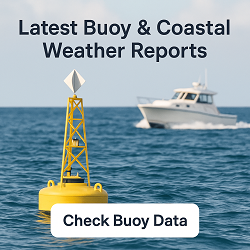Flat Lick, KY Weather Forecast and Current Conditions (40935)
Current Conditions From Nearby Station

Feels Like 57°F
at
Current Conditions From Nearby Station

Feels Like 57°F
at
Point Forecast at a Glance







This Date in Weather History
1896 - A hurricane formed on September 22 and lasted until September 30. It formed directly over the Lesser Antilles and hit Cuba, Florida, Georgia, South and North Carolina, Virginia, Washington D.C., and Pennsylvania. Its maximum sustained winds were at 130 mph. The heaviest rainfall deposited in association with the storm was 19.96 inches at Glennville, Georgia. This hurricane was responsible for an estimated 130 deaths and $1.5 million in damage.
More on this and other weather history
Flat Lick 7 Day Weather Forecast Details
Tuesday Sep 30

Day: Patchy fog before 8am, then a chance of rain showers. Mostly sunny. High near 83, with temperatures falling to around 81 in the afternoon. Northeast wind 2 to 8 mph. Chance of precipitation is 30%.

Night: A slight chance of rain showers before 7pm, then patchy fog. Mostly clear. Low around 55, with temperatures rising to around 57 overnight. Northeast wind 2 to 7 mph. Chance of precipitation is 20%.
Wednesday Oct 1

Day: Areas of fog before 9am. Sunny. High near 84, with temperatures falling to around 82 in the afternoon. Northeast wind 1 to 5 mph.

Night: Mostly clear. Low around 54, with temperatures rising to around 55 overnight. East northeast wind around 3 mph.
Thursday Oct 2

Day: Mostly sunny, with a high near 82.

Night: Partly cloudy, with a low around 52.
Friday Oct 3

Day: Mostly sunny, with a high near 80.

Night: Patchy fog between 10pm and 4am. Mostly clear, with a low around 51.
Saturday Oct 4

Day: Sunny, with a high near 80.

Night: Patchy fog between 11pm and 1am. Mostly clear, with a low around 52.
Sunday Oct 5

Day: Sunny, with a high near 81.

Night: Mostly clear, with a low around 55.
Monday Oct 6

Day: Mostly sunny, with a high near 81.
Sun & Moon Monthly
Sunrise 7:30 AM
Sunset 7:21 PM
Last Light 7:47 PM
Moonset 12:11 AM

Contiguous United States Extremes
Mon's High Temperature
101 at 16 Miles Southwest Of Tecopa, CA
Mon's Low Temperature
23 at 32 Miles West-southwest Of Bynum, MT
Weather Folklore
The low flight of rooks indicates rain.
Current subscribers - login to your ClearSky account
About Flat Lick, Kentucky
Flat Lick is an unincorporated community and census-designated place (CDP) in Knox County, Kentucky, United States. As of the 2010 census, the population was 960.
The oldest community in the county, Flat Lick was settled by Europeans before 1784 and named for a salty rock which attracted wild animals.
Content from Wikipedia, licensed under CC BY-SA 3.0.
How We Provide Better Local Weather
Current conditions: We use the nearest available station to your location - including professional MESONET/MADIS and local weather stations - often miles closer than regional airports.
Forecasts: National Weather Service point forecasts predict for your specific area, not broad regional zones, making them far more relevant to your location.

